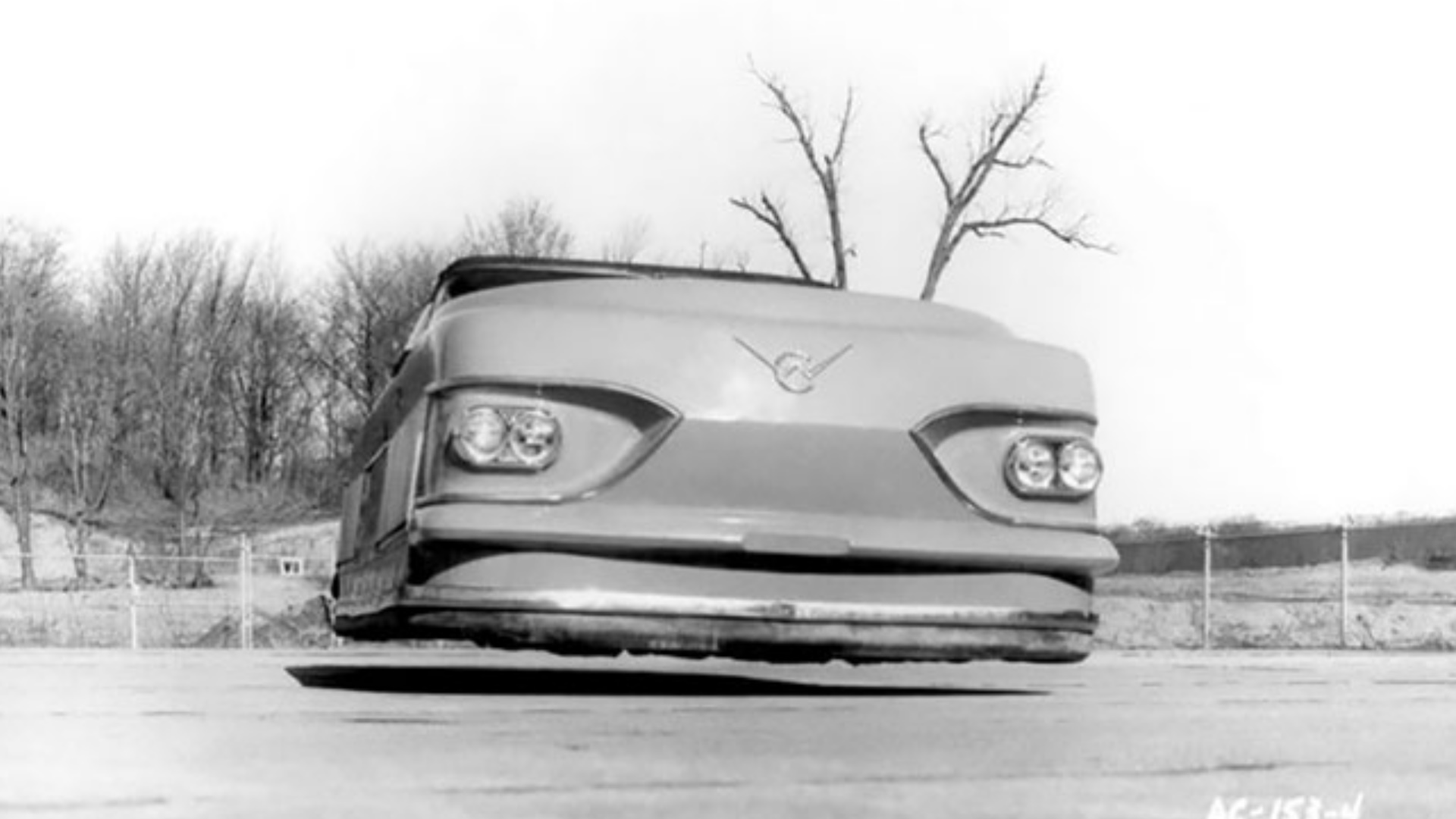

During the Cold War, America had to consider any means of getting the upper hand over the Soviets. If our military could go somewhere they couldn’t, certainly that’s a tactical advantage, right? All manner of unique vehicles were experimented with for this purpose, however, one of the most interesting and relatable was Curtiss-Wright’s “Air Cars.”
Designed to go where wheeled vehicles couldn’t, these early hovercraft looked and functioned like something from a sci-fi pulp comic. Or, later, like something straight out of Fallout. With stylish sedan bodies and convertible tops, they were the everyday hovercar, for popping down to the supermarket or a quick trip over the Bering Strait to capture the Kamchatka Peninsula.
Funded by the U.S. Military, several prototypes were made, public demonstrations were done, but the idea soon fizzled out. Although our hovercar future—just like our turbine truck future—seemed just around the corner, only one survives intact to this day.

But the flying car fiasco didn’t actually start with the Air Car, it began a few years earlier in the mid-1950s with the Army’s desire for a “flying jeep.” In a nutshell, the Army wanted an airborne vehicle with the payload of a jeep but could be flown much more easily than a helicopter. A few companies including Chrysler had a go at it. Aerospace corporation Curtiss-Wright made an attempt as well, however, the Army wasn’t satisfied with any of the vehicles.
Then, Curtiss-Wright told the Army about its “ground effect” program. No, these vehicles weren’t really flying jeeps, but they were capable of traversing almost any terrain and they did have a good payload capacity. Interested, the Army Transportation Research Command purchased two of the vehicles—known as the 2500—for engineering evaluation in 1960.




Floating on a cushion of air from two 160-horsepower aircraft engines from Lycoming, Curtiss-Wright claimed the 2500 Air Car could indeed traverse nearly any terrain. Vanes located in the outer shell of the craft directed the air to provide the steering, braking, and forward motion. With a top speed of around 38 miles per hour, it wasn’t exactly fast. However, its payload of 1,000 pounds and two to four passengers was adequate enough for the Army’s consideration.
But after a few months of testing, the Army determined it wasn’t going to cut it for field use. The Air Car could only run for two hours, which, at a max speed of 38 miles per hour gave it a very small operating radius. It also could only really traverse any flat terrain. If the road got too bumpy or the water was choppy, the craft would lose lift and basically be useless. Army officials abandoned the idea.
However, Curtiss-Wright wasn’t quite convinced its dream was dead. In 1956, the company had entered a management agreement with the faltering Studebaker-Packard corporation, giving them some manner of design resources usually reserved for automobiles—which is why the cars looked the way they did. That styling also wasn’t limited to the exteriors. The cars were done-up inside and out.


The company did several public demonstrations of these machines, even running advertisements featuring a stylish future model called the Bee. That car never left the drawing board, however.

In the end, the Air Car idea fizzled out, but the hovercraft idea did not. Militaries around the world still use hovercrafts for landing operations today, and they were used to transport passengers across the English Channel for some time. But as far as the fate of the actual Curtiss-Wright-built Air Cars go, there’s a bit of an interesting story there.
One of the vehicles tested by the Army is still intact, has been restored, and is currently sitting in the US Army Transportation Museum at Fort Eustis, Virginia. There is only one other known to have survived, and it was last seen for sale on eBay in 2015. It was in really sorry shape and seemed to just be rotting on a trailer somewhere in New Jersey. There has been no news of a restoration on the car, or if it even found a buyer.





So, for now, the idea of the hovercar is still pretty dead. Transportation on four wheels is changing rapidly, but those wheels are probably going to stay attached for the foreseeable future. But who knows, maybe with the advent of lighter, more power-dense batteries and ever-more capable computers, we could be flying to work in autonomous drones sooner than we think. After all, self-driving cars used to be purely science fiction, but they’re edging closer and closer to reality today.
Got a tip? Send us a note: tips@thedrive.com